This was published 6 years ago
Spot the fake: The truth behind some of the world's greatest tourist attractions
By Ben Groundwater
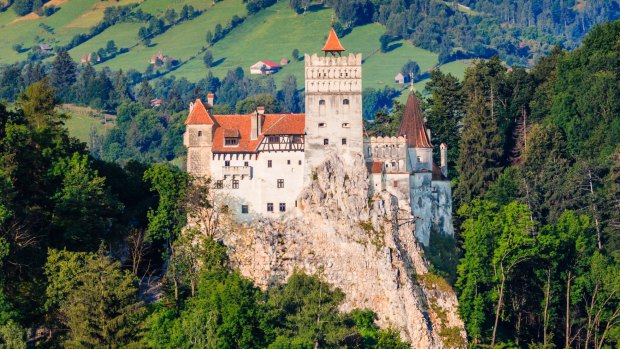
The medieval Bran Castle in Transylvania, known for the myth of Dracula. Credit: Alamy
The world is not always what it seems. Anyone who's travelled could tell you that. This globe is filled with paradoxes and contradictions, with things that may or may not be real, with people who stretch the truth or attempt to deceive, with alternative facts and fake news.
Sometimes, it can be hard to figure it all out. What you see is not always what you get, and that goes for tourism as much as anything else. Is that souvenir authentic? Is this experience legit? Does this attraction actually have any historical significance whatsoever? It isn't always easy to tell.
So, inspired by the current era of fake news, we thought we'd turn the spotlight on the fake tourist attractions: the sites and locations that aren't quite what they seem. Maybe these places are obviously and harmlessly phony. Maybe there's some deception involved. Or maybe there's just more to these famous attractions than travellers would initially realise.
That's not to say you shouldn't visit. The world is not what it seems – and isn't that what makes it great?
JULIET'S BALCONY, VERONA
FAKING IT "So … Is this the real Juliet's balcony?" It's amazing how often you hear that question while standing in a small square in the Italian city of Verona, gazing up at a seemingly nondescript verandah on an old brick building. The real Juliet's balcony? Juliet Capulet is a fictitious character, a work of William Shakespeare's brilliant imagination. The writer never even visited Verona. Juliet didn't exist. So no, this is not the real Juliet's balcony. It's just a place someone decided to make into a tourist attraction – very successfully, too, given this is Verona's most visited location.
TO GO OR NOT TO GO If you really must. However, be warned: you'll share the small space around "Juliet's Balcony" with a heaving mob of gawkers and romantics who come to post love letters on the walls, to rub the right breast of a statue of Juliet for good luck, and to take endless selfies. We wouldn't, however, recommend paying to enter the house itself, as there's really very little to see inside.
STILT FISHERMEN, SRI LANKA

Stilt fishermen at Kogalla, Sri Lanka.Credit: Alamy
FAKING IT There was a time, not so long ago, when this was real. Sri Lankan fishermen really did fish from wooden stilts embedded in the seafloor off the country's southern coast as a way of accessing deeper waters without the use of a boat. However, the 2004 tsunami destroyed many of the stilts, and their owners subsequently moved inland in search of work. Though some stilts far off the coast are still used for their intended purpose, the ones the tourists crowd around for their photos by the beach these days are manned by actors who take tips for posing, and who earn far more than they would for dragging out a few fish.
TO GO OR NOT TO GO Visit if you want, and take photos too – but just understand you aren't witnessing the real thing. This is a tourism experience only. It's a similar story at Inle Lake in Myanmar, where some of the fishermen with their conical nets and leg-paddling technique are doing it purely for the tips; and Kochi in India, where the famed Chinese fishing nets are rarely used for their intended purpose.
Join Traveller's exclusive reader tour of Sri Lanka with expert guests. Click here for details
CHECKPOINT CHARLIE, GERMANY
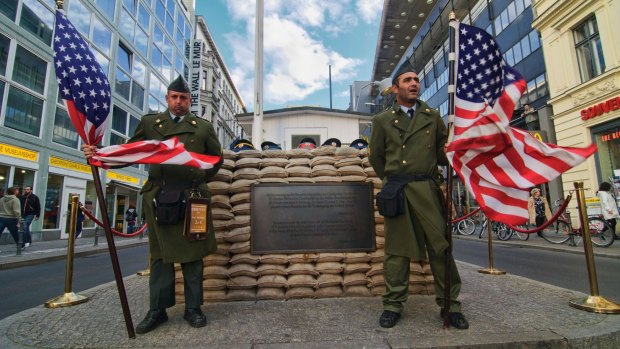
Soldiers at Checkpoint Charlie historical site in Berlin, Germany. Credit: Alamy
FAKING IT Even many of those travellers who go to visit Berlin's Checkpoint Charlie completely aware that the once historic location has become something of a tourist trap – for evidence, check out the actors dressed as US soldiers posing for photos – have little clue that this famed attraction is a total fake. Yes, this is the original site of the crossing from American-held West Berlin to the East; however, the hut and sandbags (and, for that matter, the actors) are all recreations of the originals. This is purely for tourists, and US servicemen have complained in the past of this crass glorification.
TO GO OR NOT TO GO There are some truly moving, incredible places of historic significance in Berlin, but this isn't one of them. It's fake, to begin with. It's also packed with tourists almost any time of the day, and the surrounding area has also succumbed to the whims of the hordes, with plenty of tacky souvenir shops and a currywurst stand called "Snackpoint Charlie". Steer clear.
See also: 10 reasons Berlin is Europe's coolest city
BRIDGE ON THE RIVER KWAI, THAILAND
FAKING IT Here's the thing: the Burma Railway, otherwise known as the "Death Railway", was real – very real. The part of the infamous railway that has become perhaps the most well-known, however, thanks to the 1957 film Bridge on the River Kwai, is not. The Burma Railway never actually crossed Thailand's River Kwai. It did, however, cross the adjacent Mae Klong River, near the town of Kanchanaburi, and it's that bridge that the novel and film erroneously refer to. When tourists began showing up looking for this touted bridge over the River Kwai, the Thai government simply renamed the section of the Mae Klong that was home to the crossing the "Kwai Yai" – there, problem solved.
TO GO OR NOT TO GO Though the location is wrong, and parts of the bridge have had to be reconstructed after being destroyed, this is still a site with strong historical significance, particularly for Australians. The area around Kanchanaburi is also spectacularly beautiful, and worthy of the train trip from Bangkok alone.
See also: 20 things that will shock first-time visitors to Thailand
WARSAW OLD TOWN, POLAND
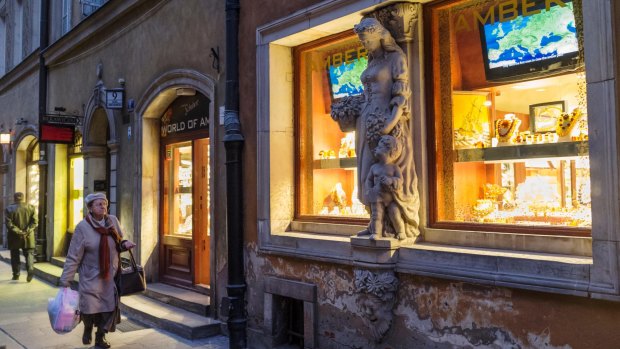
An Amber shop in Old Town, Warsaw.Credit: Alamy
FAKING IT There's plenty of history in Warsaw's Old Town – far more, in fact, than most would initially realise. Though the area looks impressively well preserved, it's actually even more impressively well rebuilt. Much of the centuries-old settlement was reduced to rubble by the Germans during World War II, and had to be recreated piece by piece by a dedicated band of researchers and workers who used a mix of original materials salvaged from the rubble, and new blocks to hold it all together. Interestingly, the recreation might not be 100 per cent accurate – Italian landscape painter Bernardo Bellotto's renderings of Warsaw were used by researchers to plan the rebuild, meaning a little artistic licence may have crept in to the "new" Old Town.
TO GO OR NOT TO GO Warsaw's Old Town is now a UNESCO World Heritage Site, hailed as an outstanding example of historical reconstruction, and is most definitely worth a visit. Admire the area for its original beauty, as well as for the skill and dedication required for its rebuilding.
SHANGRI-LA, CHINA
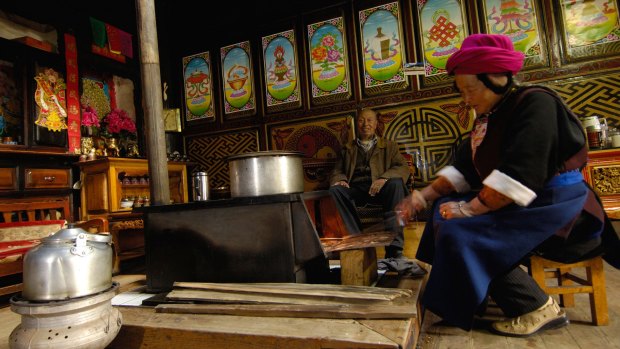
Inside a Tibetan house interior in Diqing Tibetan Autonymous Prefecture, Yunnan Province, China. Credit: Alamy
FAKING IT You could be forgiven, as you fly into Diqin Shangri-La Airport, for believing that you'd arrived in the mythical citadel itself. Unfortunately, Shangri-La is just that: mythical. No such place actually exists. The Chinese city of Zhongdian, in the Yunnan province, was officially renamed Shangri-La in 2001 as a way to attract more tourists who come to seek the utopian settlement written about by James Hilton in his 1933 novel Lost Horizon. That land, though apparently inspired by National Geographic stories of Tibetan China, never really existed.
TO GO OR NOT TO GO Most definitely. Though the name is a fake, this is still an extremely beautiful part of the world, where huge Tibetan-style homes dot the wide plains of the Himalayan countryside, where yaks graze and eagles fly. Immerse yourself in Tibetan culture in a place unlike any on the planet.
See also: 20 things that will shock first-time visitors to China
PARTHENON, GREECE
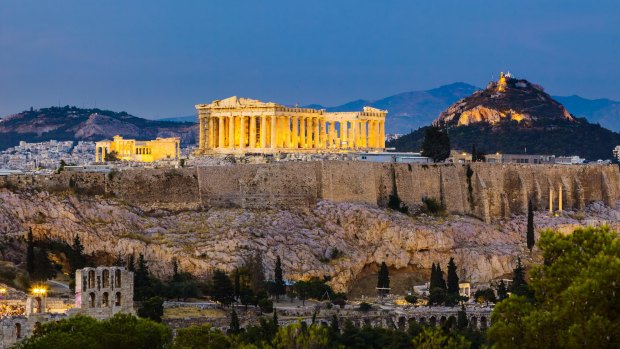
Credit: Alamy
FAKING IT It's easy to be drawn into the romance of a site such as Athens' famous Parthenon, to stroll through a place with so much history and convince yourself that it's all real, that this architectural wonder has stood the test of time, that nothing has been altered in 2000 years. Unfortunately, in the case of the Parthenon that's not quite true. Yes, the bones of this ancient Greek temple look much as they did in 438 BC. However, the Parthenon was almost completely destroyed by invading Venetians in 1687, and the building you see today has been undergoing a process of meticulous restoration since 1975. Many of its original marble sculptures – the infamous Elgin Marbles – are also still housed in the British Museum in London.
TO GO OR NOT TO GO It would be a shame to avoid the Parthenon simply because it's a reconstruction. The temple is a faithful renewal of a true architectural wonder, and though it's usually packed with tourists and the marbles are still missing, this is one of Europe's must-visit sites.
HAGIA SOPHIA, TURKEY
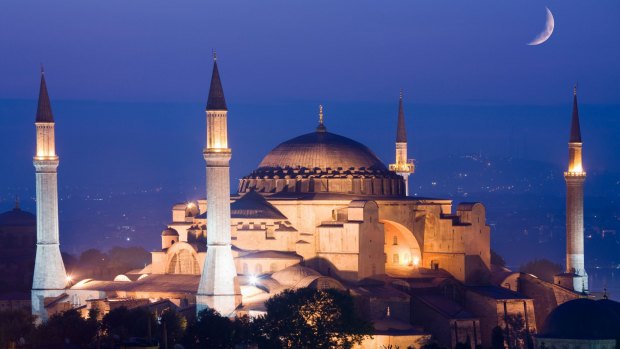
Hagia Sophia Mosque in Istanbul, Turkey. Credit: Alamy
FAKING IT To call this a fake is maybe going a little far. It's just that there's much more to Istanbul's Hagia Sophia than meets the eye. For instance, it's not a mosque. At least not originally. Though the site now boasts four telltale minarets, a central dome, and plenty of Arabic inscriptions in its interior, the Hagia Sophia was built as a Greek Orthodox basilica in AD537. It served as the seat of the Patriarch of Constantinople for almost 1000 years – despite a brief period as a Roman Catholic church under the Latin Empire – before being converted into a mosque by the Ottomans in 1453. It became a museum in 1931.
TO GO OR NOT TO GO Absolutely. Step inside the Hagia Sophia and you step into history, learning about the events that have taken place in these hallowed halls. The museum is always busy, but that crush doesn't go anywhere near close to detracting from its beauty.
BRAN CASTLE, ROMANIA
FAKING IT Ooooh, spooky. It's the famous Bran Castle in Transylvania, the historic home of Count Dracula, an eerie place where it seems like vampires could be real, that everything you've read about these blood-suckers could be true. And yet, of course, it's not. Because vampires are fictitious. Sorry about that. Castle Dracula was also merely a figment of author Bram Stoker's vivid imagination, and not only is there no record of the Irishman having been inspired by this particular edifice, there's no record that Stoker even visited Romania. It's not even known whether Vlad the Impaler, said to be the inspiration for Dracula, even called through. There are two other castles in Romania that lay similar claim to being Dracula's home – Poenari Castle in Arefu, and Corvin Castle in Hunedoara – but those, too, are fake.
TO GO OR NOT TO GO Sure, why not. As long as you're happy to indulge in the fantasy and accept it as such, Bran Castle is an impressive fortress in a spectacularly beautiful setting. Visitors are free to explore the 14th-century castle, strolling through the old rooms and climbing the turrets to admire the views.
FRAUENKIRCHE, GERMANY
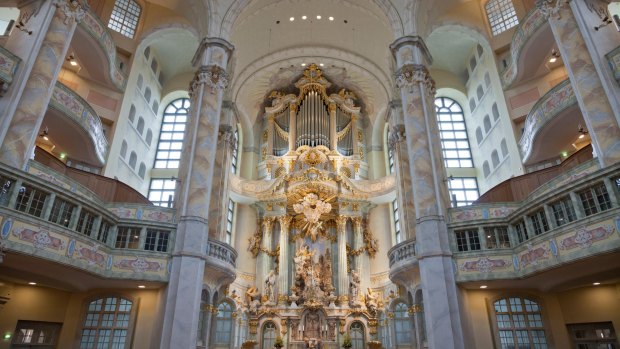
The church of Frauenkirche in Dresden, Germany. Credit: Alamy
FAKING IT Dresden's Frauenkirche is one Germany's most beautiful old churches – except it's anything but old. This classic baroque structure, reminiscent of 18th-century architectural styles, was built in 2005. There has been a church on this site since the 11th century, and the most famous of those, the Lutheran Frauenkirche, was built in 1743. That magnificent structure, however, with its 96-metre-high dome, and its original organ once used by Johann Sebastian Bach, was completely destroyed by Allied bombing raids in 1945, and left as a pile of rubble during Communist rule. Its eventual reconstruction was completed just over 12 years ago.
TO GO OR NOT TO GO Though the Frauenkirche may not be original, it still oozes historical significance. The church is not only a religious site, but was the location of the peace protests and human rights marches that sparked the fall of the Berlin Wall and the reunification of Germany. It's definitely worth paying a visit.
FIVE PLACES THAT ARE ALL TOO REAL
The tourist sites that are frighteningly genuine.
AUSCHWITZ, POLAND
The most well-known of all the former Nazi concentration camps, Auschwitz remains open to the public, a site of remembrance for those connected to the tragedy that unfolded here, as well as those who simply wish to see it for themselves. It's a solemn, eerie place that remains a popular destination for visitors to Poland. www.auschwitz.org
KILLING FIELDS, CAMBODIA
More than a million people were killed and buried on this site just outside Phnom Penh by Pol Pot's Khmer Rouge regime. Today, the area at Choeung Ek is open as a fairly grisly tourist site, a place where human bones are still rising to the surface on the footpaths, and where a Buddhist stupa houses more than 8000 human skulls. www.tourismcambodia.com
GROUND ZERO, USA
The site of the deadliest ever attack on US soil is now the home of the National September 11 Memorial and Museum, which commemorates the destruction of the World Trade Centre towers, and the loss of 2977 lives, by al-Qaeda terrorists. It's a moving and respectful tribute. www.911memorial.org
CHERNOBYL, UKRAINE
Chernobyl: all you have to do is hear the name, and you know immediately what happened here. The site of the infamous 1986 nuclear meltdown, an absolute no-go zone for so long, is now open to tourists: simply apply for a pass from the Ukraine government, secure the services of a guide, and away you go. www.chernobyltour.ua
POMPEII, ITALY
Sites of disastrous events aren't limited to those of the recent past: witness, for example, Pompeii, the ruins of the Roman city that was destroyed by the eruption of Mount Vesuvius in AD79. This is one of Italy's most popular attractions, an ancient settlement frozen in time, preserved by the very disaster that brought about its end. www.pompeiisites.org
FAKE AND PROUD OF IT
Five of the world's most obvious phonies
STATUE OF LIBERTY, FRANCE
In 1886, the government of France gifted the famous Statue of Liberty to the USA. Three years later, French expats based in the US returned the favour, bequeathing upon Paris a smaller replica. This statue, with its flaming torch held aloft, can be found on the Ile aux Cygnes, a small island in the middle of the Seine. www.en.parisinfo.com
THAMES TOWN, CHINA
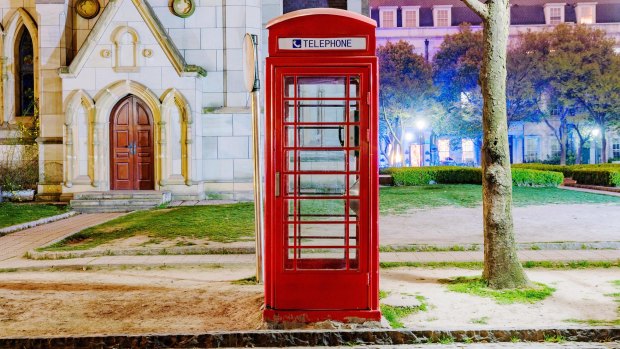
English style telephone box at night in Thames Town Shanghai.Credit: Alamy
Ah, the cobbled streets of merry old England; the Victorian-era terrace houses, the fish and chip shops, the cozy pubs. Where else could you be except the outskirts of Shanghai, in a bizarre and very modern recreation of a British market town? To visit Thames Town is to step into a weird parallel universe. www.meet-in-shanghai.net
THE VENETIAN, USA
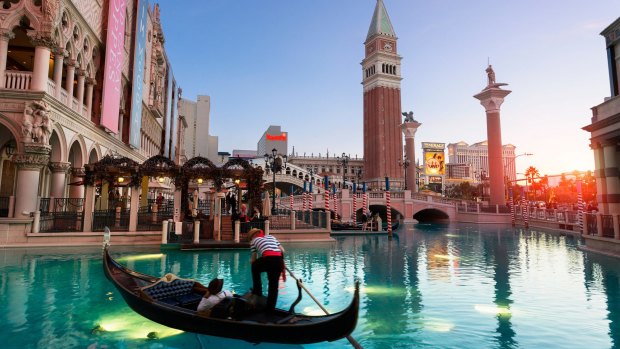
The Venetian Hotel. Credit: Alamy
Though there are stripy-shirted gondoliers punting through the canals under a blue sky, and crowds of people on the pavements looking for a good place to eat pasta, this is most definitely not Italy. It's the Venetian, a whopping big casino and knock-off of the floating Italian tourist trap, in Las Vegas, Nevada. www.venetian.com
HALLSTATT, CHINA
Hallstatt in Austria is a quaint and stunningly beautiful lakeside village with almost 3000 years of history. Hallstatt in China is a shameless rip-off, a replica village that includes exact copies of the parish church and fountain, and boasts about seven or eight years of history. Each has its individual charms, I guess. www.cnto.org
TAJ MAHAL, DHAKA
Bangladeshis love a copycat: check out Mini Bangladesh, a theme park of miniature versions of the country's most famous buildings, just outside Chittagong. In the capital city of Dhaka, meanwhile, they've built a full-scale model of the Taj Mahal, made with real marble. It was commissioned by a Bangladeshi filmmaker, and cost US$56 million. www.visitbangladesh.gov.bd
See also: Why Australia is the land of the idiot
Sign up for the Traveller Deals newsletter
Get exclusive travel deals delivered straight to your inbox. Sign up now.